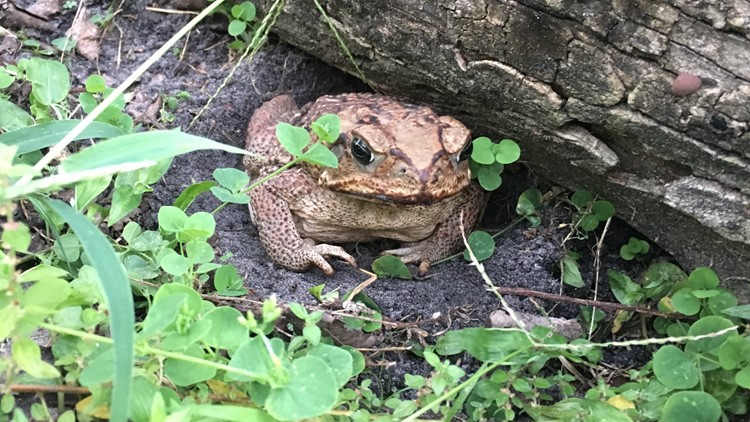ST. PETERSBURG, Fla. — In Florida, summer doesn't only mean humid temperatures and tropical storms. It also means an influx of an invasive frog species known as cane toads.
Most active during the summer months, cane toads are commonly found in yards, around buildings or near canals and ponds in the Sunshine State, according to the Florida Fish and Wildlife Conservation Commission (FWC).
These frogs are reportedly poisonous to most animals that try to bite or consume them, posing a danger to the pets of Florida residents.
The following guide highlights facts on cane toads, how to identify them and how Floridians can protect their pets from them:
What do they look like?
Ranging from reddish-brown to grayish-brown in color, cane toads typically have a light-yellow beige belly and can be uniform in color or have darker markings around their body, according to FWC.
In addition, cane toads usually range in size from 6 to 9 inches in length. FWC says they are often confused with the native southern toad. But, adult cane toads are generally much larger than adult southern toads, which only grow to approximately 3 to 4 inches.
Another important distinction between the two is that southern toads will have well-defined crests on their head, which look like ridges or horns above their eyes. Meanwhile, cane toads don't have crests. Instead, they have a larger, triangular-shaped gland behind their eye, FWC said.
Where did they come from?
Cane toads are nonnative to Florida, according to FWC. They originated from the Amazon basin in South America and north to the Rio Grande Valley in Southern Texas.
FWC said cane toads were first introduced to the Sunshine State to control agricultural pests in sugar cane in the 1930s and 1940s. Current populations are reportedly believed to be linked to escapes and releases by importers in the 1950s and 1960s.
How do I remove them from my property?
To safely remove cane toads, FWC says residents looking to handle them should wear eye and skin protection and latex, rubber, or nitrile gloves. Those who need help can hire a wildlife trapper.
Residents should follow these steps to keep cane toads off their property, according to FWC:
- Cut your grass regularly and keep it short
- Fill in any holes around structures
- Trim the underside of shrubs
- Keep branches or riprap off the ground
- Clear away brush piles
- Remove clutter
What if my pet bites/swallows a cane toad?
Pets that bite or consume a cane toad can become sick and die in as little as 15 minutes without proper treatment, according to FWC. Cane toads release a milky toxin in defense that can stick to a pet's mouth.
Common symptoms in pets affected by this toxin include frantic or disoriented behavior, brick-red gums, seizures and foaming of the mouth. FWC says pet owners should follow these steps if their pet is showing these symptoms:
- Wash toxins forward out of the mouth using a hose for ten minutes being careful not to direct water down the throat.
- Wipe gums/tongue with a dish towel to remove toxins
- Get your pet to the vet!
What if I come into contact with a cane toad?
FWC says residents who come into contact with a cane toad should thoroughly wash their hands and always wear latex, rubber or nitrile gloves to safely handle them.



